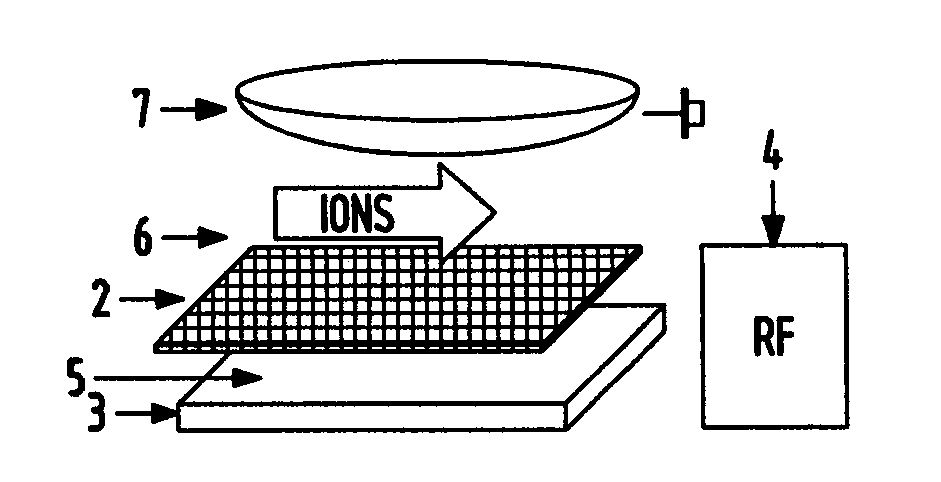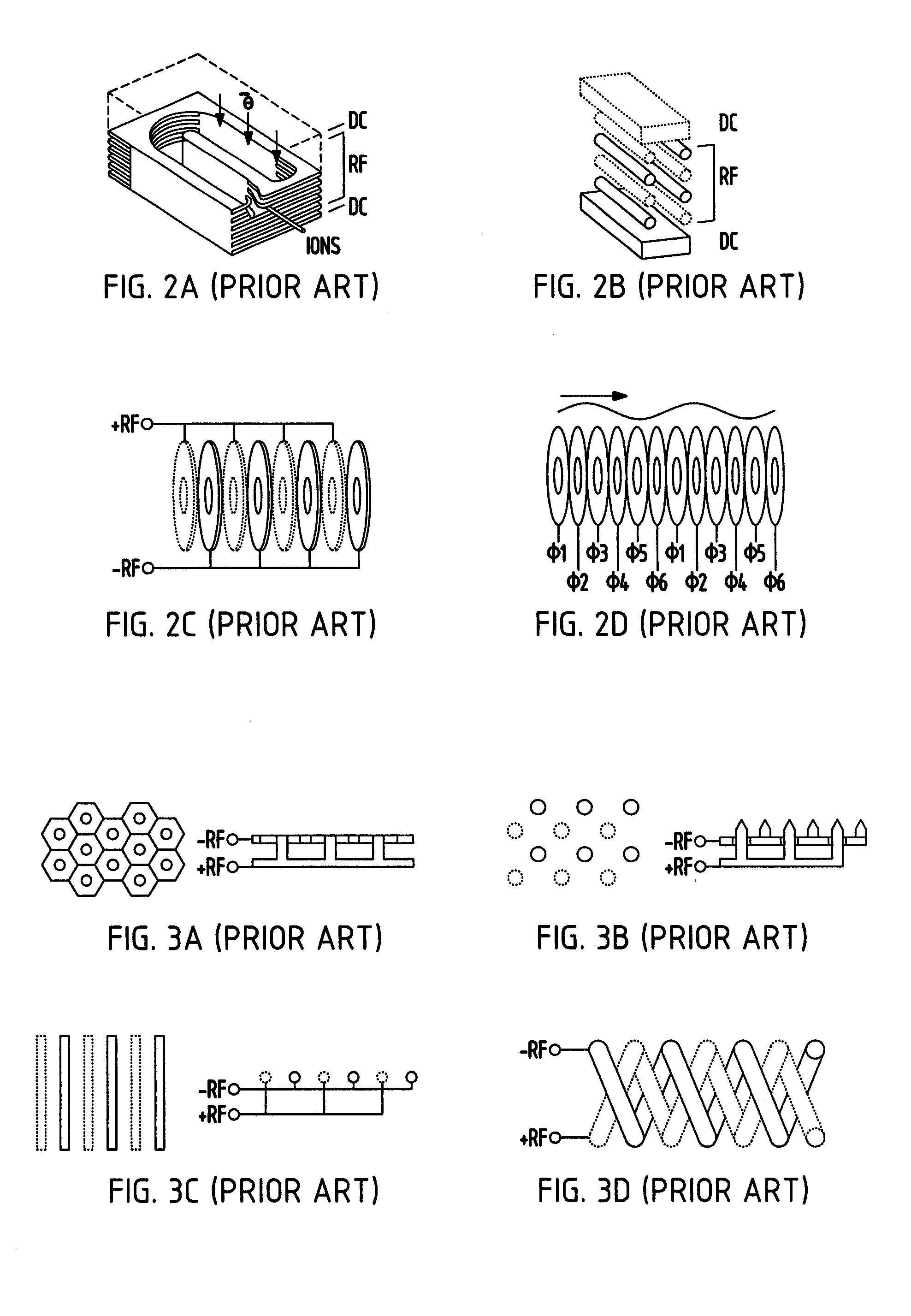Method and apparatus for ion manipulation using mesh in a radio frequency field
a radio frequency field and mesh technology, applied in the field of ion optics and mass spectrometry, can solve the problems of limiting the mass range of trapped ions, complicating the fabrication of rf devices, and limiting the miniaturization and fabrication of massive arrays, so as to improve the technology of making ion repelling, facilitate construction, and reduce the effect of ion loss
- Summary
- Abstract
- Description
- Claims
- Application Information
AI Technical Summary
Benefits of technology
Problems solved by technology
Method used
Image
Examples
Embodiment Construction
RF Repelling Surface
[0091]Referring to FIG. 5A, the ion repelling system 1 of the present invention using an asymmetric RF field comprises a mesh 2 and a plate 3 and an RF signal generator 4 connected between the mesh and the plate. The system forms an inner region 5 between the electrodes 2 and 3 and an outer region 6 behind the mesh. A grounded outer electrode 7 (representing vacuum chamber) is spaced in an outer region from mesh 2, and the distance between the electrode 2 and the curved electrode 7 far exceeds the cell size of the mesh 2. The RF potential could be applied asymmetric, either to mesh 2 or plate 3 (FIGS. 5B and 5C). Alternatively, RF signals of opposite phases (denoted as +RF and −RF) could be applied to both electrodes (FIG. 5D) and their amplitude could be adjusted to minimize RF field in the outer region 6.
[0092]Referring to FIG. 5C, an RF field around the mesh is shown for a particular example of two-dimensional mesh (i.e. formed by parallel wires) with wire dia...
PUM
 Login to View More
Login to View More Abstract
Description
Claims
Application Information
 Login to View More
Login to View More - R&D
- Intellectual Property
- Life Sciences
- Materials
- Tech Scout
- Unparalleled Data Quality
- Higher Quality Content
- 60% Fewer Hallucinations
Browse by: Latest US Patents, China's latest patents, Technical Efficacy Thesaurus, Application Domain, Technology Topic, Popular Technical Reports.
© 2025 PatSnap. All rights reserved.Legal|Privacy policy|Modern Slavery Act Transparency Statement|Sitemap|About US| Contact US: help@patsnap.com



